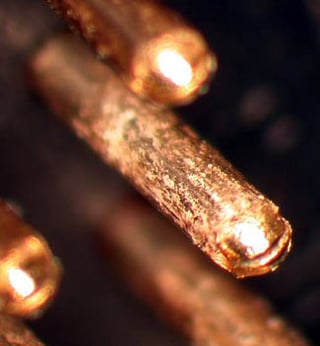The following is an excerpt taken from the Cirris article, “Dry Circuit Testing.” To read the full article, click the link below.
Dry Circuit Testing is used after Environmental Stress Tests to Detect Contaminates and Oxides on Mating Contact Surfaces.
Typically, a dry circuit test is performed in conjunction with environmental stress tests intended to create contamination or metal oxides on connector contact surfaces. A Dry Circuit test is not particularly relevant until these environmental stresses are applied and the oxides and contaminates are deposited on the contact surfaces.
(Think of deposits built up on a drinking glass subjected to repeated washing and drying cycles in hard water. On electrical contacts, these contaminates interfere with a good connection.)
Low Voltage, Low Current is Used to Avoid "Wiping Away" the Contaminates
Excessive current through the contacts during testing can cause a physical change in the contact area on a microscopic level. Current can cause heating, which can soften or melt the contact points and surrounding area. The contact area enlarges, resulting in a reduction in resistance.
To avoid "wiping away" the contaminates, a dry circuit method is used for testing. A dry circuit is one in which the voltage and current are limited to levels that can't cause changes in the physical and electrical condition of the contact junction. Generally, that means the open circuit voltage is 20mV or less and the short circuit current is 100mA or less.
To continue reading, click the link below.

Further Reading:
Hipot Testing with AC
Capacitance and Testing
Testing Cables with a Twist